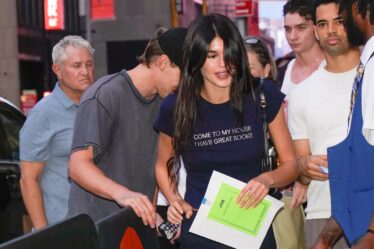
Not so long ago, reporting quarterly results was a cheerful affair for publicly-traded luxury brands. Despite hefty price hikes, sales were up 10, 20, even 30 percent on post-pandemic exuberance and seemingly endless Chinese demand. So far this year, the earnings calls have been more grim. With a handful of exceptions, big luxury firms have reported flat-to-negative sales, and the outlook has only darkened. Sector bellwether LVMH kicks off third-quarter results on Tuesday, and its performance — along with commentary from chairman Bernard Arnault — will set the tone for the coming weeks.
Chinese Demand
What will inspire Chinese consumers to shop like it’s 2019 again? It’s the most important question facing the industry today. Luxury brands are bracing for steep declines in their China business in the third quarter, with flat to single-digit percentage drops seen as a win in the current environment. The country’s government cut interest rates and launched a fresh round of fiscal stimulus in September. Over the weekend, officials promised to inject more money into the economy, but were short on specifics.
Any rebound in luxury spending hinges on a recovery in the property market, which does not appear imminent. Chinese households have a large portion of their wealth in property, so slumping home prices can directly depress consumption, while the overall gloomy mood can put even renters off shopping.
The Right Price
For years, luxury brands have pushed up prices, mostly without being penalised by consumers. The calculus was that wealthy customers could absorb the hikes, making up for any pull back from entry-level shoppers. This held true for a while, and even in the second quarter of this year, brands at the very top of the market, such as Hermès, reported strong sales. But cracks are emerging.
While most visible in China, high-net-worth individuals are easing back on spending worldwide, amid uncertainty about the direction of the economy, the Federal Reserve’s interest rate policy, geopolitical tensions and other factors, according to an analysis by Bernstein. The bank’s analysts also note that the cycle tends to turn quickly, with slumps in luxury demand lasting on average four to six quarters, followed by a rapid recovery. Some say the worst may be over by this time next year, if not sooner.
The question is whether brands that have been at the front of the price hike wave — including several in the LVMH portfolio — will look for ways to reconnect with aspirational customers, either through new, cheaper products, or discounting. LVMH’s recent deal with F1 is another approach to the problem: it promises a tight, long-term relationship between brands like Louis Vuitton and Tag Heuer, and a fast-growing, increasingly diverse fandom.
Designer Shakeup
The sector’s biggest players aren’t waiting for the market to turn. Weakening demand is almost certainly a key factor in the turnover among creative directors at major luxury brands. Hedi Slimane’s departure from LVMH’s Celine label is a case in point: though he roughly tripled sales, his high salary and production budgets were sticking points in thorny contract negotiations, BoF reported.
Last month, LVMH hired Sarah Burton to re-energise its Givenchy label. On Friday, the group announced Kim Jones is leaving Fendi, but remaining in his role as men’s creative director at Dior. And there may be more moves to come. Who is in these jobs certainly matters. But creative talent can only take brands so far when they’re up against China’s property market and the Federal Reserve.
The Week Ahead wants to hear from you! Send tips, suggestions, complaints and compliments to [email protected].



